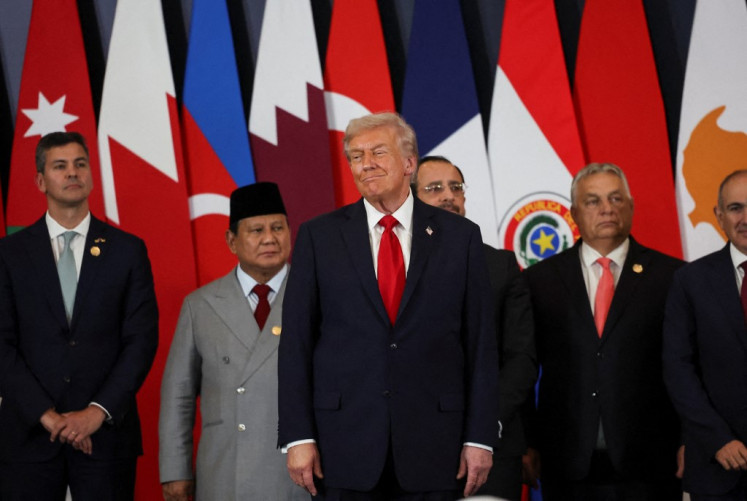Popular Reads
Top Results
Can't find what you're looking for?
View all search resultsPopular Reads
Top Results
Can't find what you're looking for?
View all search resultsRI industry ‘heading for higher technology’
Global production is currently shifting from basic goods to higher value-added goods, reflecting the change in the nature of worldwide trade; and the trend is also taking place in Indonesia at present, a report from British bank HSBC reveals
Change text size
Gift Premium Articles
to Anyone
G
lobal production is currently shifting from basic goods to higher value-added goods, reflecting the change in the nature of worldwide trade; and the trend is also taking place in Indonesia at present, a report from British bank HSBC reveals.
The shift in production of basic goods toward higher value goods has taken place, particularly in Asia, with China leading the export growth of information and communications technology (ICT)-based products and industrial machinery, the latest HSBC Commercial Banking Trade Forecast says. This will give an opportunity to other countries like Bangladesh and Vietnam to enter industrial sectors, such as textiles, that are heavily dependent on low labor costs, it says.
A similar trend was also starting to be seen in Indonesia, one of the largest producers of key commodities like coal and palm oil. Several sectors, such as the garment industry, had started to apply new designs and techniques to produce higher-value goods with higher prices, HSBC’s head of corporate banking, Amanda Murphy, said.
“As manufacturers add value, their products will become more expensive. This is an important step as countries, including Indonesia, enter a new stage,” she said during a press briefing on the report in Jakarta on Wednesday.
The annual report also points out that despite the encouraging trend, Indonesia will still see its export growth driven by traditional key commodities, such as coal, palm oil and rubber. Strong demand for the commodities will derive from rapidly growing markets — China, India and Korea — which would overtake Japan, providing a huge opportunity for Indonesia to boost its overseas sales.
In its projection, exports of coal will jump by 24 percent from 2016 to 2020, and by 22 percent from 2021 to 2030. Meanwhile, exports of palm oil will leap by 12 percent from 2016 to 2020, and by 11 percent from 2016 to 2020.
“Commodities, which are Indonesia’s biggest exports, will continue to play a key role, accounting for almost 20 percent of the growth in Indonesia’s exports until 2030,” Murphy said. In terms of imports, as Indonesia intensively builds infrastructure and industry expands, huge demand for capital goods will persist in the years head, with industrial machinery imports slated to surge by 31 percent from 2016 to 2020, and 33 percent from 2012 to 2030, according to the report.
The report also highlights that shipments of goods to emerging markets in Asia will become Indonesia’s fastest growing source of trade until 2030, as is the case in other Asian countries.
“A lot of trade [during the period] will be done within the region. At first, Asian countries exported to the West, but now we are seeing more trade occurring within the region,” Murphy said.
Indonesia’s exports will expand by more than 15 percent to India, South Korea and China, while the sources of import growth will be Mexico, India, Vietnam and Egypt.
Indonesia’s trade with the rest of the world has expanded rapidly in recent years, partly due to the liberalization made available by various trade agreements with partners.
















